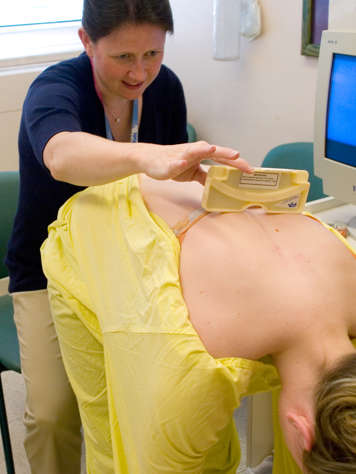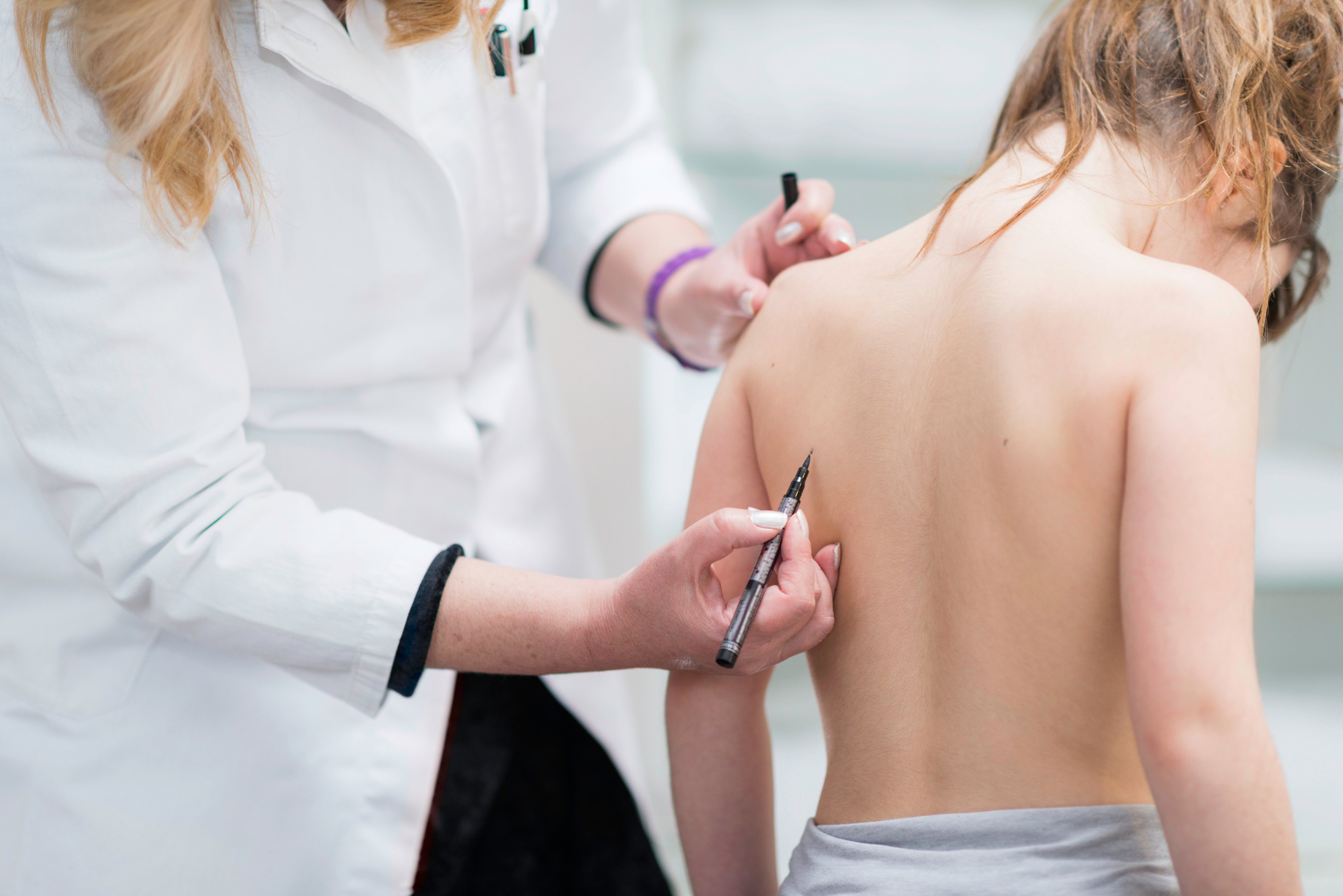Parents and health-care professionals may notice a curve in a teen's back, but scoliosis is diagnosed after they have had an X-ray. Treatment depends on the type of curve they have.

How is scoliosis diagnosed?
As a parent, you may be the first person who notices a change in your teen’s posture. Or your teen’s school screening program might pick up on it first. School screening may not be done in many areas. The screening process involves having a trained health-care professional visit the school and examine all pre-teens. It involves a simple test, called the Adam’s test, where the child bends forward to touch their toes. The health-care professional will look to see if one side of the back is higher than the other. This change in posture may seem to come out of the blue. One hip may be higher than the other. Your teen’s shoulders may seem tilted or their ribcage may appear twisted. This generally prompts a visit to the paediatrician or family doctor, who may be able to detect a curve in the spine during a physical exam.
In order to diagnose scoliosis, your teen requires an X-ray to view the bones in their back. These back bones are called vertebrae. When viewed from the front or the back, the spine is normally in a straight line. If your teen has scoliosis, the vertebrae will usually curve to form the shape of an S or C. S-shaped curves are also called double curves. C-shaped curves are also referred to as single curves.
The size of the curve is measured in degrees. A small curve is less than 20 degrees. A moderate curve is between 20 and 50 degrees. A large curve is more than 50 degrees.
How is scoliosis treated?
If your teen has a small curve, it can be followed by their paediatrician or family doctor. If your teen’s curve is moderate, they may require a brace or be followed for observation. If their curve is large, they may require surgery. Generally, your teen’s curve is most likely to get bigger during the adolescent growth spurt.
There are many factors that your teen’s surgeon will consider before recommending treatment:
- How old they are
- How large their curve is: Is the curve greater than 30 degrees? Greater than 45 degrees?
- Your teen’s physical maturity: Are they still growing?
- Whether they have an S-shaped or C-shaped curve
- The progression of their curve: How fast is their curve getting bigger?
- How your teen feels about the look of their back
For more information about the treatment of scoliosis, see the "Treatment" section of this resource centre.
